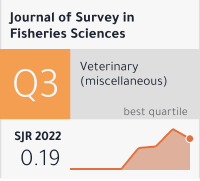Studying The Effects Of Annealing Temperatures On Nio P-Type MSM Photodetector Prepared Using Physical Vapor Deposition (PVD).
DOI:
https://doi.org/10.53555/sfs.v10i1.1366Keywords:
nickel oxide, annealing times, physical vapor deposition, thin film, thermal vacuum evaporationAbstract
Using the physical vapor deposition (PVD) technique, nickel oxide (NiO) thin films were applied to glass substrates and annealed for two hours at various annealing temperatures (280°C, 320°C, and 360°C). On the structural, optical, and electrical characteristics of the NiO thin films, the effect of the annealing temperatures was studied. According to X-ray diffraction, a cubic structure with a strong (2 2 0) preferred orientation persisted through various thermal treatments. and that the crystallite size increased as the annealing temperature increased., The absorption peak increased with increasing annealing temperatures to become 0.84 with a small shift towards the shorter wavelength, according to the optical absorption spectra, which were shown to be a result of the process. Absorbance. the band gap of about 3.61 eV at 280ºC and 320ºC has 3.63 eV. For 360ºC annealed films, the optical band gap continues to decrease close to 3.67 eV. As a result of our study, we were able to demonstrate that the surface-to-volume ratio has a significant impact on the photo response characteristics of the photodetectors. Low sensitivity and lengthy rise times were caused by the annealing temperatures, which also decreased photodetection performance.









